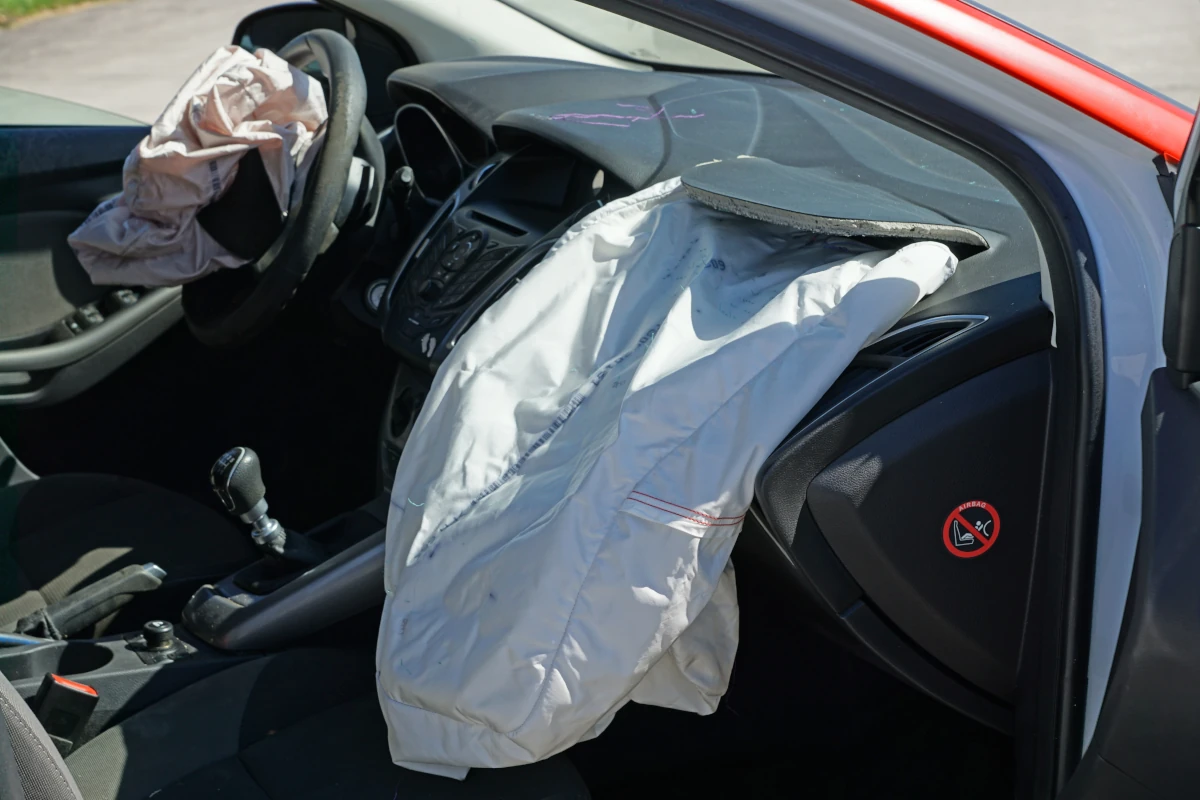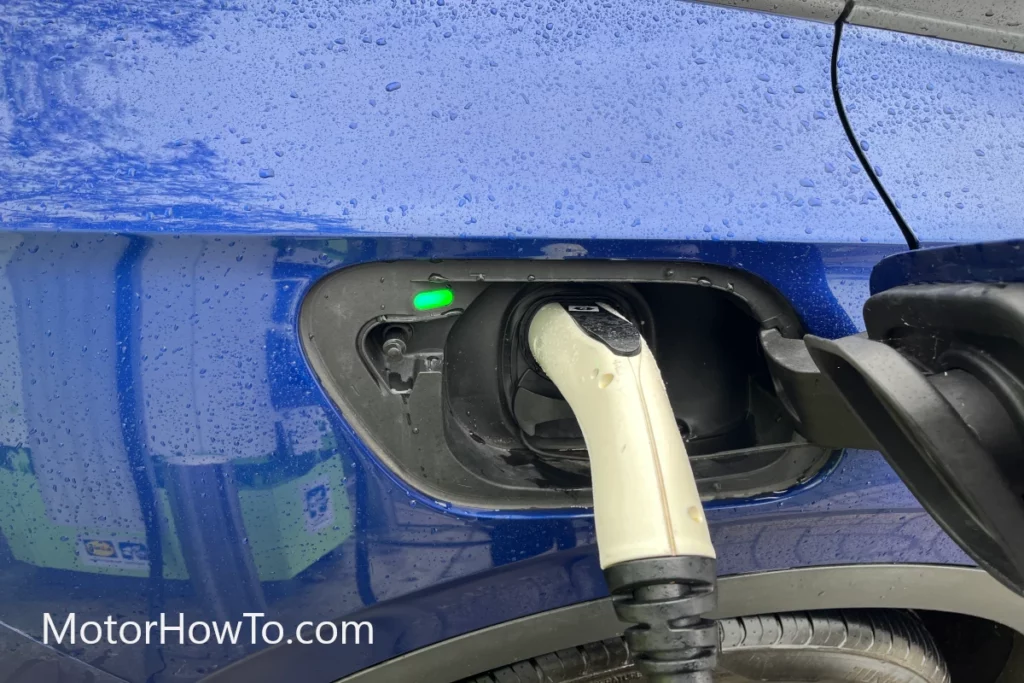Airbags are some of the best safety features that any vehicle can have because of how effective they are at saving lives and minimizing the chances of serious injuries during a collision.
The way an airbag works is that there is a quick explosion caused by chemicals that will produce nitrogen gas to inflate the airbag. This allows the airbag to inflate quickly enough to react to the situation.
However, why is nitrogen used in airbags?
Here’s why nitrogen gas is used in airbags
Nitrogen is not deliberately used in airbags because the car doesn’t necessarily fill the airbag with gas. Instead, nitrogen is the byproduct of a chemical explosion caused by sodium azide, which is ignited by the airbag system. Sodium azide, when ignited, produces the nitrogen that fills the airbag with gas.

The thing you need to understand about the way airbags work is that they need to use something that will allow them to fill up during a collision immediately.
Having a pump that will fill the airbag with gas during a crash will take too much time. But by using the gas created by an explosion, the airbag will be able to quickly fill up during a crash to save lives in time.
Related:
- Why Do Airbags Make Smoke And Smell? (Explained!)
- Can Rear-End Collision Cause Airbags To Deploy? (Explained)
- Can Airbags Deploy on a Parked Car? (Answered)
Why is nitrogen gas used in airbags?
There is no arguing against the fact that airbags are some of the most useful safety features that vehicles have. Together with the seatbelt, these are capable of minimizing the chances of suffering from serious or fatal injuries during a car crash.
As such, cars should have working airbags if you want to make sure that you don’t get injured whenever you find yourself in a vehicular accident.
So, as useful as airbags are, there are some people who actually don’t know how they work. Sure, we know that airbags immediately inflate while popping out of the steering wheel during a crash. And the fact that airbags inflate right away during a crash without even taking a second is amazing in its own right.
What you should know is that the air that fills the airbags isn’t the usual air that you find in balloons such as helium. Instead, the air in the airbag is mostly made up of nitrogen gas.
So, why is it that nitrogen is used to fill up airbags?
So, what is important to note here is that airbag systems do not deliberately use nitrogen gas in airbags. That basically means that those who make airbags do not necessarily think about using nitrogen whenever they are installing these systems in a car. That is because there are no pumps that will fill up the car’s airbag with nitrogen gas. There isn’t even a tank of nitrogen gas that will fill the airbag up with nitrogen during a car crash. However, nitrogen is still used primarily in airbags, but it is used in a way that it is simply a byproduct of a chemical reaction.
That said, nitrogen is used mainly because it is the gas that is produced by a chemical reaction that happens in the airbag system during a crash. So, in other words, nitrogen isn’t deliberately used in airbags but is used only because this is the gas that is produced by the chemical when the airbag system is triggered during a vehicular accident.
To understand that, it is necessary that you also understand how an airbag system works in the most basic way.
Airbag systems in a car make use of crash sensors that are capable of sensing whether or not the car was in a strong enough collision to trigger the airbag. When the sensors detect that the car decelerated in a manner that can only happen during a crash, these sensors will trigger the airbag circuit.
Once the circuit has been triggered, electricity will run through the current and will then turn on a heating element, which will heat a gas called sodium azide. Under normal conditions, sodium azide is very stable and will not react to anything happening while you are driving the car. But, when heated, it will cause a small explosion or a chemical reaction.
The small explosion coming from the sodium azide will produce enough nitrogen gas to fill the airbag up rather quickly. As such, the nitrogen here is merely a byproduct of the chemical reaction when sodium azide is heated. That means that it isn’t deliberately used but is only incidental in the sense that it is the gas that sodium azide produces when it is heated.
What is sodium azide, and why is it used in airbags?
As mentioned, nitrogen isn’t deliberately used in airbags but is only the byproduct of a chemical reaction that happens when sodium azide is heated during a car crash.
But what exactly is sodium azide, and why is it used in airbags?
Sodium azide is an inorganic chemical compound with a formula of NaN3. That means that this is a compound that is formed when one molecule of sodium bonds with three molecules of nitrogen. As mentioned, under normal circumstances, sodium azide is stable. However, when heated, that is when it becomes quite volatile because of how quickly it will break down.
The reason why sodium azide is used in airbags is that it is capable of breaking down quickly whenever it is heated. When it breaks down, it produces a small explosion that can happen in an instant.
This chemical equation 2 NaN3 –> 2 Na + 3 N2 describes what happens when sodium azide is heated and breaks down. You will notice in that equation that there is a byproduct of N2. If you know your basic high school chemistry, you would know that this gas is nitrogen. That means that whenever sodium azide breaks down, nitrogen gas is one of the byproducts that the chemical reaction produces.
It is important to note that only 130 grams of sodium azide are needed to fill an airbag with 67 liters of nitrogen gas. That amount of air will be more than enough to give the airbag the force it needs to pop out of the steering wheel or dashboard and then serve as a protective cushion.
So, going back, sodium azide breaks down very quickly that it will produce nitrogen gas as a byproduct in an instant the moment the chemical reaction occurs when the chemical compound reacts with heat. As such, this chemical is used in airbags due to the very fact that it breaks down fast enough and will produce nitrogen in a hurry to fill the airbag with gas during a crash.
When an airbag system is triggered, the sodium azide reacts in almost an instant. That is why airbags inflate and pop out of the steering wheel or dashboard without taking half a second to spare during a car crash.
Imagine what would happen if the airbag system used a chemical compound that took time to react or explode. If other chemicals that are a lot stabler are used, the airbag will inflate too late to the point that the crash has already taken its toll on the driver and the passengers.
You can just imagine if the airbag relies on a pump that will fill it up with air during a crash. It will take too long for a pump to inflate the airbag. And, as you probably already know, the airbag needs to inflate fast enough to not only act as a cushion during a crash but to make sure that the person’s head doesn’t jerk forward too much, as the airbag pushes it back due to the force of its inflation.
That said, the airbag needs to be able to pop out in an instant because it has to react the moment the car finds itself in a crash. Taking half a second to inflate will be detrimental to the safety of the driver and passengers in a car accident. That is why a chemical that reacts and breaks down quickly, such as sodium azide, is used to fill airbags with air.
Why does an airbag have many tiny holes in it?
While airbags are supposed to cushion the person during a crash, what you should also know is that airbags also have tiny holes in them.
So, if airbags are supposed to have air in them, what is the purpose of the tiny holes?
The reason why airbags have tiny holes is that the gas needs to escape from the airbag shortly after the airbag deploys. So, when the airbag pops out of the steering wheel, the gas has to steadily escape and seep out of the airbag so that the person can move around and escape from the vehicle during a crash. Having an inflated airbag in front of your face will make it very difficult for you to escape the car in the event of an accident.
Even if airbags have tiny holes in them, you don’t have to worry about them not inflating.
Airbags will always inflate because the speed at which the nitrogen gas fills them up will be so great that the gas won’t have time to escape through the holes as the airbag inflates.
It is only when the airbag has already inflated and has been deployed that the air will steadily escape deflating the airbag.
Sources
How Does a Vehicle Airbag Work?
Why do we use nitrogen gas in airbags instead of other gases?



